Light bulbs play a crucial role in setting the mood and atmosphere of a room. But with a wide range of sizes, types and shapes available in the market, how do you choose the right one?
To help you make an informed decision, this light bulb buying guide covers all the essentials, from energy efficiency and cost to colour temperature and environmental impact.
Why Choosing the Right Bulb Matters
Imagine a cozy living room with warm lighting or a bright kitchen with cool white light. The right combination promotes a comfortable and welcoming ambience, gives the home a sense of uniformity, and even enhances productivity.
But different bulbs have different brightness levels, colour temperatures and energy efficiency. So how do you choose? Consider the following factors when making your decision.
Energy Efficiency and Cost
Newer light bulbs like LEDs, CFLs, and halogens are more efficient and last longer than old-fashioned incandescent bulbs. LED bulbs use 90% less energy, CFL bulbs use 60-80% less energy, and halogen bulbs use 20-30% less energy than incandescents. Additionally, LED bulbs can last up to 50,000 hours, while incandescent bulbs last around 1000 hours. Although LEDs have a higher upfront cost, their energy savings and longer lifespan make them a more cost-effective choice in the long run.
Colour Temperature and Mood
Consider the desired mood and function of the room when selecting the colour temperature of your light bulbs. How do warm yellows make you feel over, say, cool whites? What sort of lighting do you prefer when reading or applying your makeup? Would the same lighting bore you day after day? If so, a smart bulb with adjustable colour temperatures could be a good investment, enabling you to change the room's atmosphere with a few taps on your smart device.
Lifespan and Sustainability
As mentioned earlier, LED bulbs have a longer lifespan than incandescent bulbs, meaning less frequent replacements and less waste. They're also more environmentally friendly, as they don't contain toxic materials like mercury found in some other types of bulbs. When shopping for bulbs, look for certifications such as ENERGY STAR, which ensures energy efficiency and sustainability standards are met.
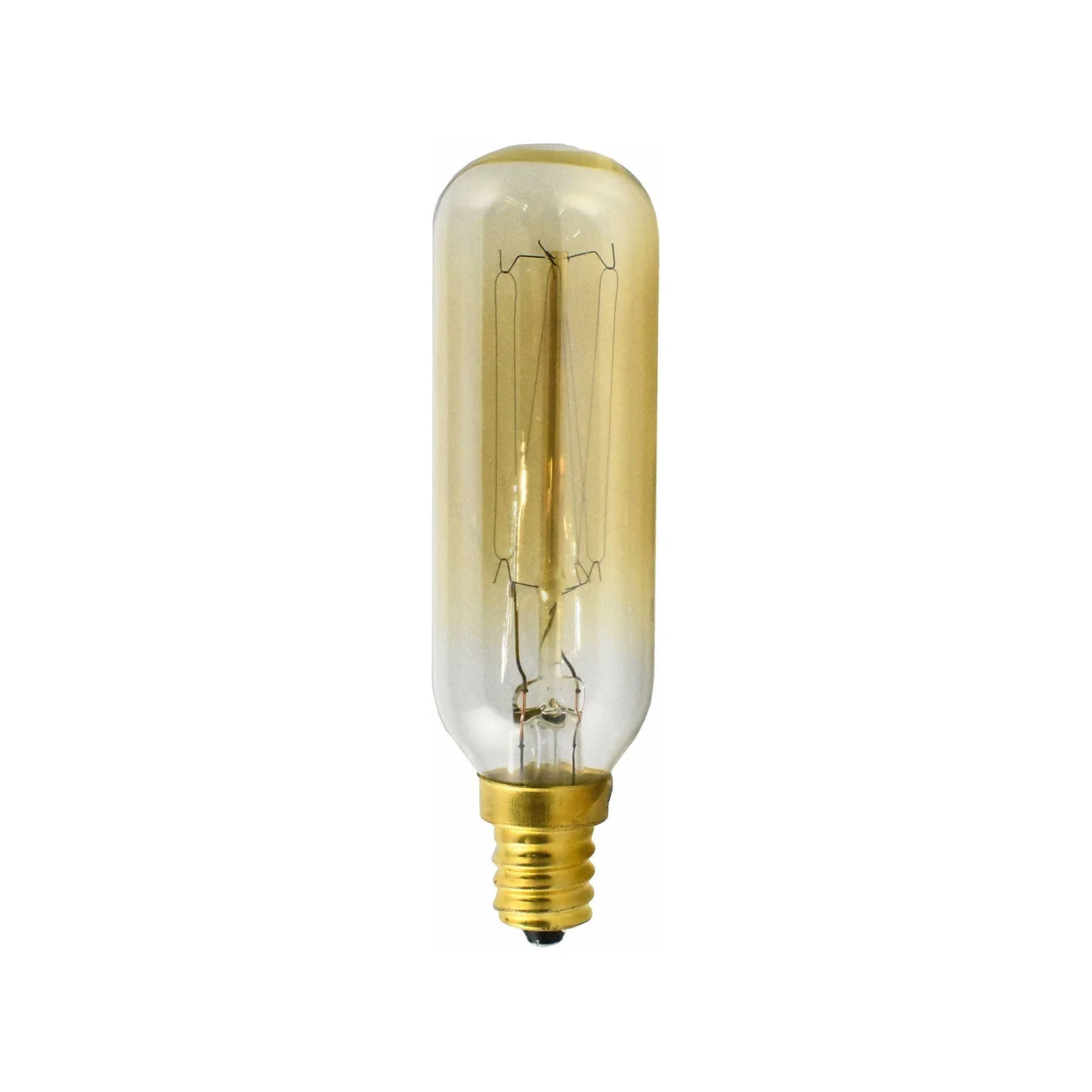
40W Incandescent E12 T6 120V CL
Incandescent Bulbs
Incandescent bulbs were the first mass-produced types of light bulbs, debuting in the late 1800s. They emit a warm glow by heating a filament wire until it becomes white-hot. A significant amount of energy is wasted as heat, and they have a shorter lifespan compared to newer light bulbs. For these reasons, the sale and purchase of some, if not all, incandescents are banned in places like the U.S. and Canada. Still, incandescent bulbs remain popular in some parts of the world due to their warm and familiar light quality and are often used in decorative fixtures and lamps.
The Classic Choice
Type A incandescents are the classic, pear-shaped light bulbs found in wall sconces, behind lamp shades and fitted into many other lighting fixtures. These bulbs are commonly used in businesses, too, and are screwed in using an Edison screw (the spiralled groove at the base). The most frequently used Type As are lamp bulbs, specifically the A19 bulb, with different brightness levels measured by lumen count.
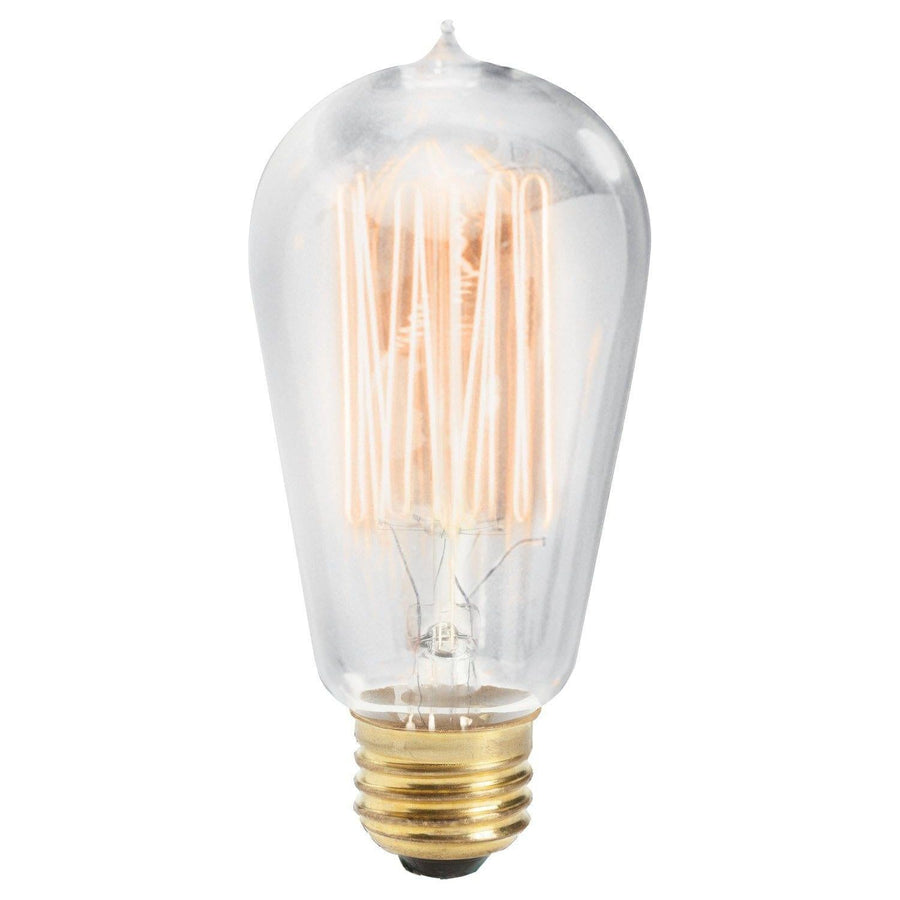
60W Antique Clear Incandescent Bulb
Pros and Cons
A19 bulbs have pros and cons, and it's important to consider them before using them in your fixtures.
Pros:
- Standard A19 bulbs are readily available in most stores and online retailers.
- They're compatible with a wide range of lighting fixtures.
- They emit a warm and familiar light quality that many people prefer.
- Their omnidirectional design emits light in all directions, as opposed to spotlights.
Cons:
- Unlike floodlights, standard A19 bulbs are designed for interior use.
- Incandescent bulbs, a type of Type A bulb, are banned in many places due to their poor energy efficiency.
- Pear-shaped A19s may not be as attractive as globe-shaped bulbs for pendant lighting.
Ideal Use Cases
Ideally, you would use a pear-shaped bulb like the traditional A19 indoors, fitting them into your table lamps, ceiling fixtures and sconces.
Halogen Bulbs
Halogen light bulbs are a type of incandescent that uses halogen gas to increase light output and rated life. They're known for their moderately high efficiency, dimmability and longer lifespan compared to regular incandescent bulbs. They're often used in track lighting systems, special light fixtures and headlights.
Bright and Intense Lighting
Halogen light bulbs emit a bright, intense light, though these may be dimmable depending on the light fixture. This is good to remember when buying light bulbs, as halogens can significantly impact the ambience and mood of a room or space.
Pros and Cons
No light bulb buying guide is complete without weighing the pros and cons of halogens.
Pros:
- Fully dimmable, adjusting to reach the desired mood.
- Last longer than traditional incandescent bulbs.
- Used in applications where a high level of colour accuracy is needed (e.g. photography and stage lighting
Cons:
- Can get very hot while in use (must be handled with care)
- More expensive than traditional bulbs
- Not as energy-efficient as LED bulbs
Ideal Use Cases
Halogen light bulbs are ideal for indoor and outdoor lighting, with retail spaces, display areas and other commercial establishments often using them for their bright and crisp lighting.
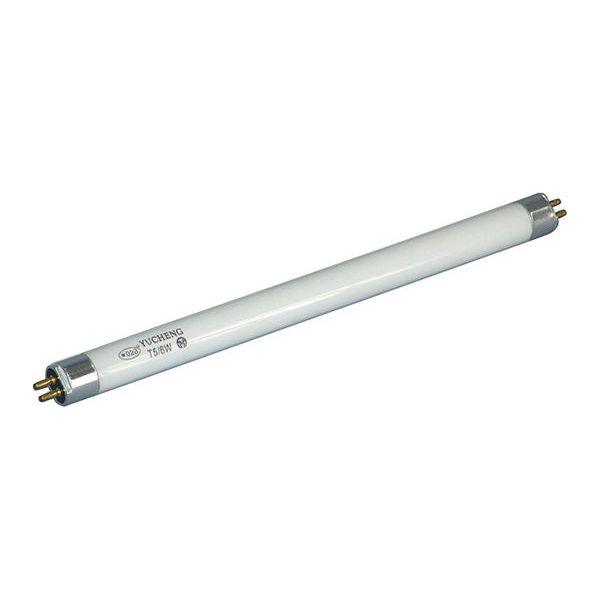
Fluorescent Bulbs
Fluorescent lights are a highly versatile type of lighting you'll most likely encounter at the office, school or grocery store. They come in different types, such as linear fluorescent tubes, bent tubes, circline tubes and CFLs (compact fluorescent lights). Unlike incandescents and halogens, fluorescent light bulbs are energy efficient and typically priced lower than LEDs. Their bluish-white light isn't the warmest, but they're a practical option for most businesses.
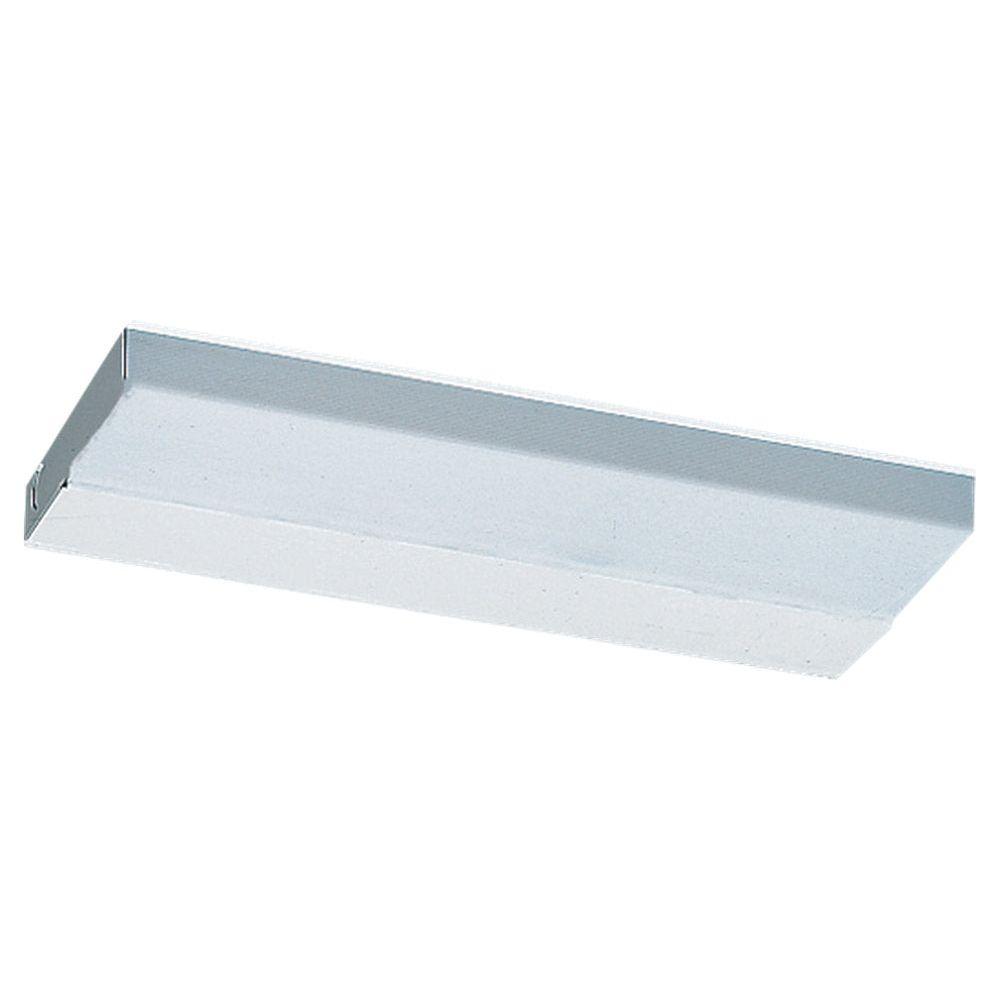
12.25" Self-Contained Fluorescent
The Energy-Saving Workhorses
Fluorescent tubes are commonly used in public spaces for their life expectancy and energy efficiency compared to incandescent bulbs. They have a better light output and generate less heat than standard incandescent light bulbs while consuming fewer Watts.
Pros and Cons
Fluorescents are a popular light bulb type, but it's worth considering the pros and cons before you buy.
Pros:
- Fluorescent bulbs are energy-efficient, offering 25%-75% savings compared to traditional light bulbs.
- They're long-lasting and emit 75% less heat than incandescents, keeping spaces cool.
- They're available in different sizes and shapes, making them versatile for different lighting needs.
Cons:
- Fluorescent bulbs contain small amounts of mercury that can be harmful to the environment if not disposed of properly.
- The light they produce can sometimes be harsh and unflattering, with a faint buzzing sound when in use.
- They have a higher upfront cost compared to incandescent bulbs.
Ideal Use Cases
Hallways, offices, warehouses and other similar spaces are ideal areas for installing fluorescent light bulbs.
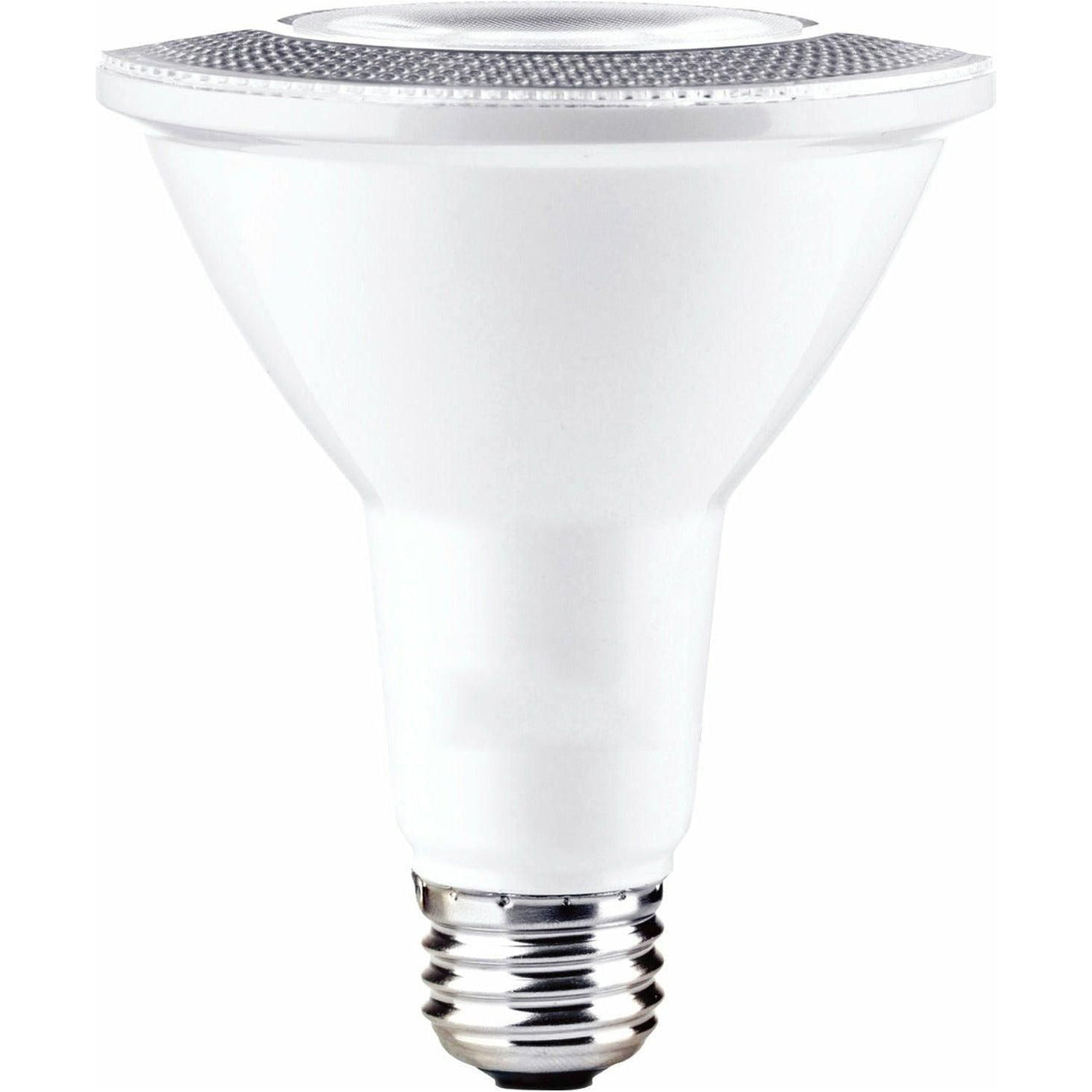
11W Dimmable LED PAR30 3000K 120V
LED Bulbs
LED is an acronym for "light emitting diodes." These light bulbs are 90% more energy-efficient than incandescents, making them a popular light bulb type on the market. They work by having an electrical current pass through a microchip. This illuminates the tiny diodes, resulting in visible light. A heat sink then absorbs the heat produced by LED, preventing performance issues.
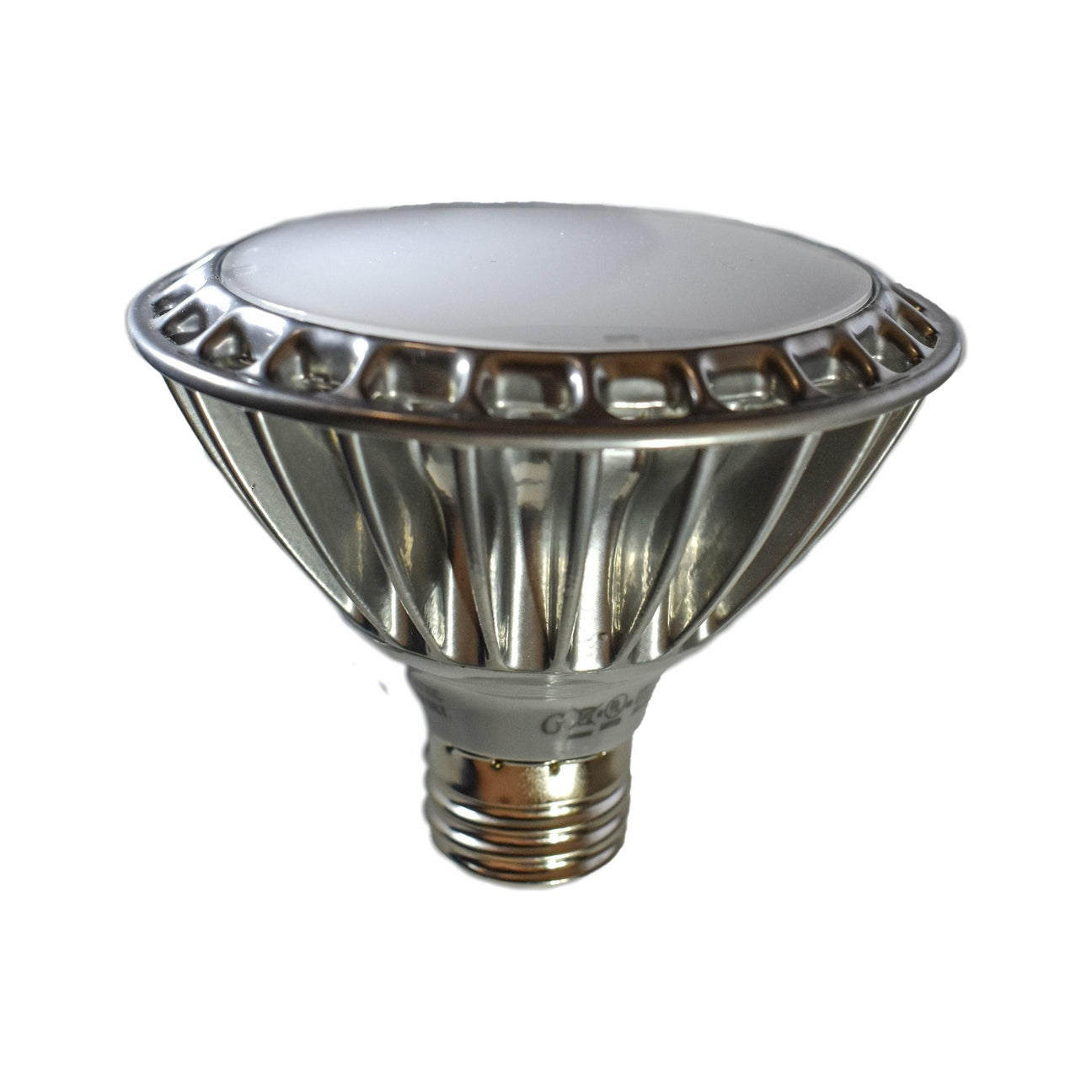
11W Dimmable LED PAR30 3000K 120V
The Modern Standard
LED light bulbs have become the modern standard due to their high energy efficiency, exceptional light quality, life expectancy and environmentally friendly benefits. One common misconception is that LED lighting isn't as aesthetically pleasing as incandescent bulbs, but this is no longer true. While the light they produced was initially a stale bluish hue, they now come in a range of colours from soft yellows to crisp whites.
Pros and Cons
LEDs are among the best light bulbs for both indoor and outdoor use. Here's a closer look at the advantages and drawbacks:
Pros:
- More energy-efficient than traditional incandescent bulbs
- Last up to 25,000 hours or more, compared to incandescent bulbs that last around 1,000 hours
- Produce very little heat, making them safer to handle and reducing the risk of fire
- Resistant to shock, vibration and impact, making them ideal for outdoor and industrial use
- Free of toxic materials and can be recycled.
Cons:
- More expensive than traditional bulbs, which may deter some buyers
- May produce a different colour of light than traditional bulbs
- May not be compatible with certain types of dimmer switches
Ideal Use Cases
LEDs are now commonly used in various outdoor and indoor lighting applications, such as street lights, parking garages, walkways, refrigerated cases, modular lighting and task lighting.
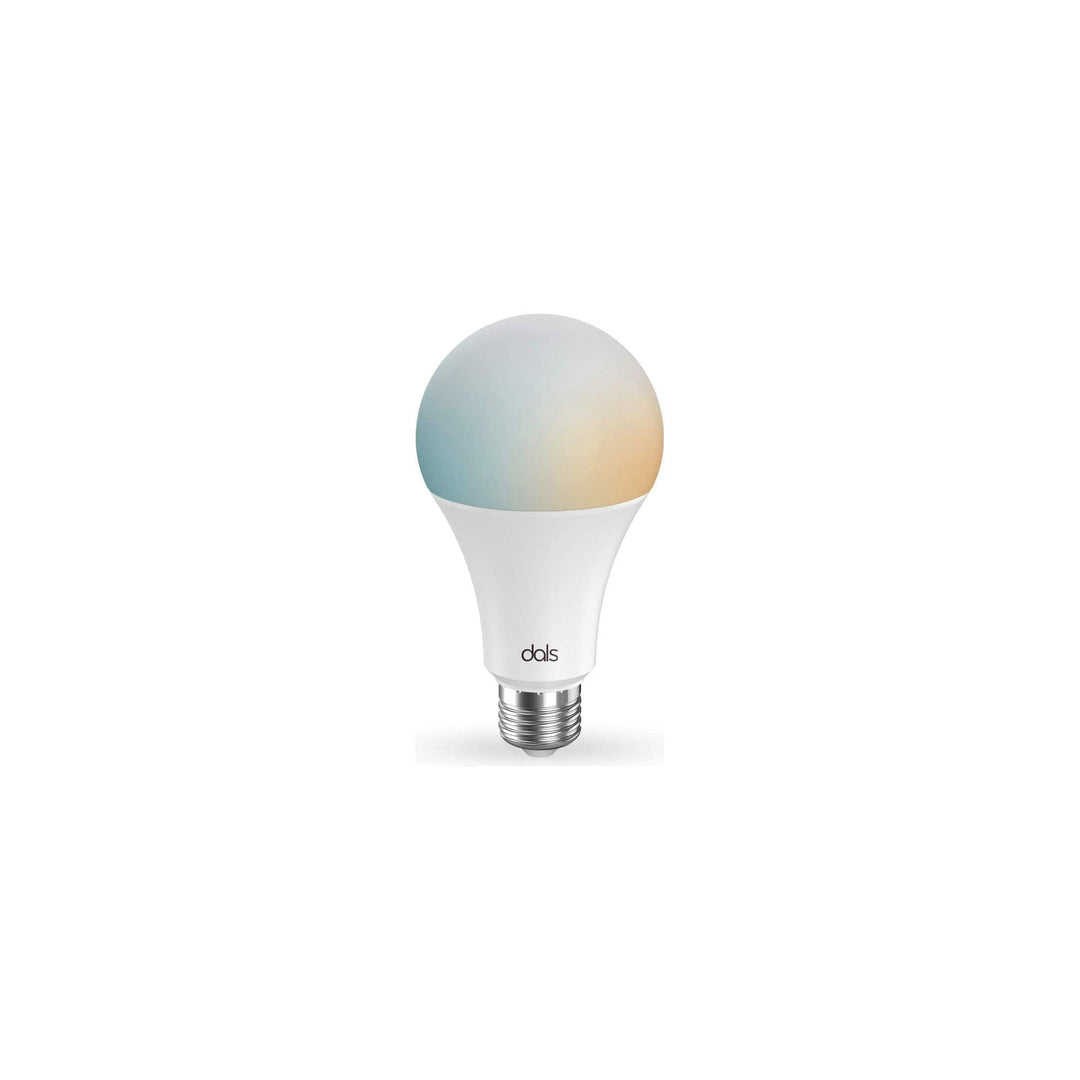
A21 Pro RGB+CCT Smart LED Bulb
Specialty Bulbs
Different manufacturers design specialty light bulbs for specific purposes or applications. Examples include coloured bulbs, infrared bulbs, UV bulbs and more. These types of light bulbs may have unique shapes or sizes and are often used in specialized lighting fixtures such as chandeliers and sculptural installations.
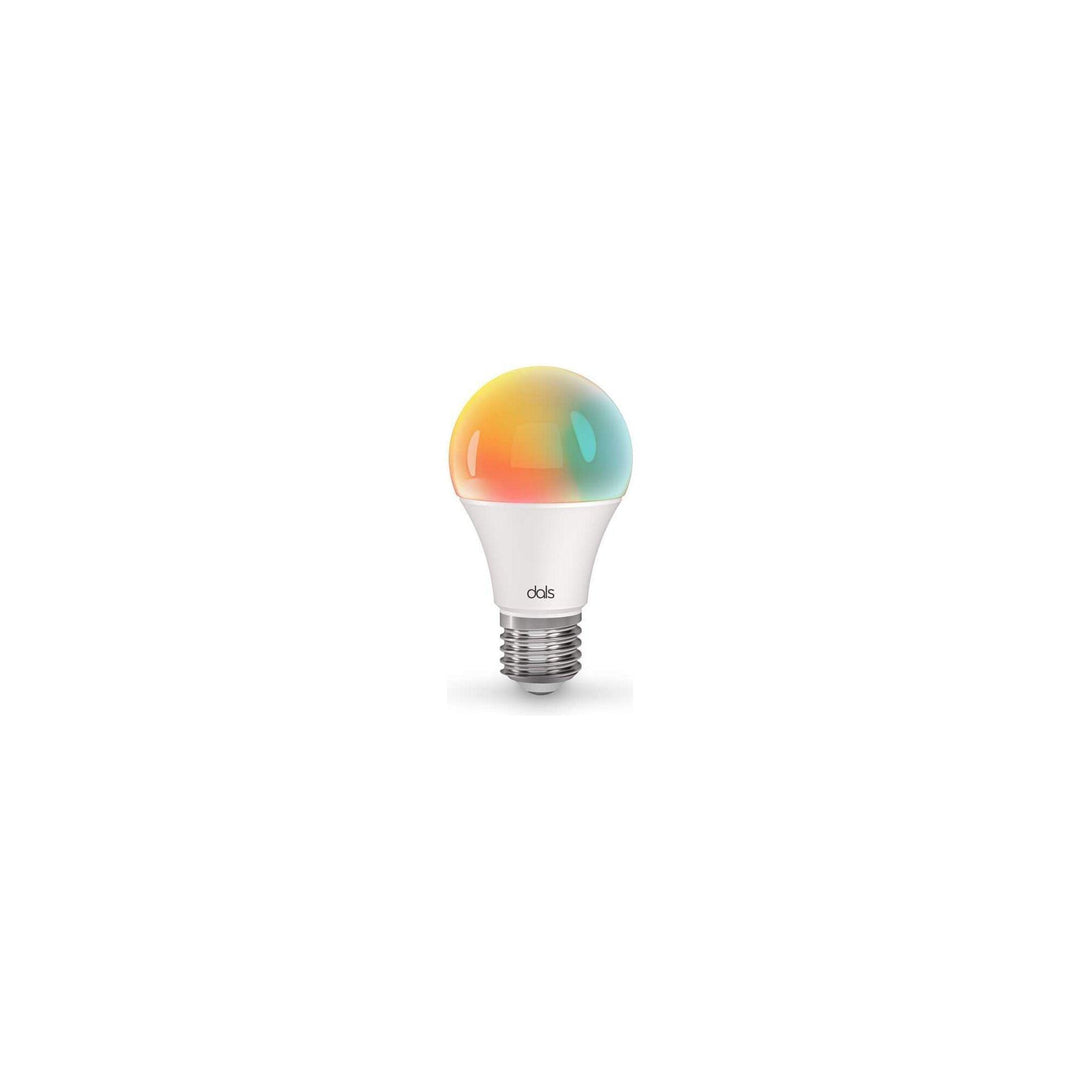
Smart Bulbs and Beyond
Smart light bulbs represent one of the latest trends in lighting technology. You can control these bulbs using an app on your smartphone or tablet, allowing you to adjust the brightness and colour temperature, and even turn them on and off from anywhere. Adding smart bulbs to your home automation system can be great, as they work seamlessly with other smart devices such as voice assistants and smart thermostats.
Beyond smart light bulbs, you can swap out your light switches with smart switches that connect to Wi-Fi or ZigBee (a wireless protocol requiring a hub). Instead of automating the light bulbs, you can automate the on/off switch itself, enabling you to program the light when it should turn on or off.
Pros and Cons
Consider these pros and cons before deciding on smart light bulbs:
Pros:
- Energy efficient, resulting in lower electricity bills compared to traditional bulbs
- Compact design available in A19 type with Edison screw, fitting most sockets
- Easily controlled using a mobile app, voice command or smart home assistant
- Wide range of colour options to suit your mood or occasion
Cons:
- Pricier than standard bulbs and may require additional expenses to set up
- Wifi-dependent smart bulbs won't work properly without a stable internet connection
- Tech glitches may occur, which can be frustrating for those who aren't tech-savvy
Ideal Use Cases
Smart bulbs are great for adjusting home colour schemes, enhancing entertainment experiences, task-specific lighting, energy savings, security and safety.
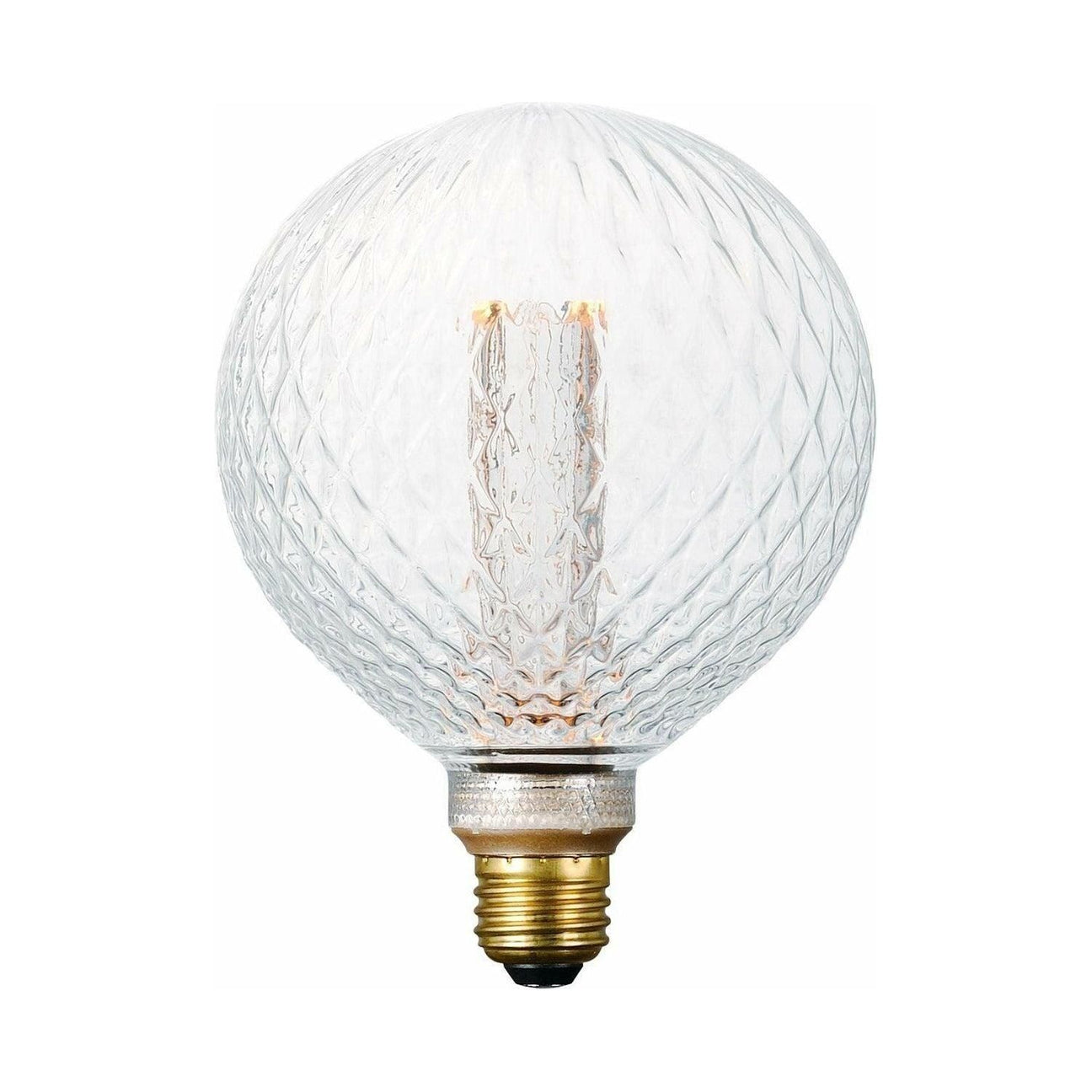
3.5W Dimmable LED E26 S125 Classic Pattern
Comparing Bulb Types
Four types of light bulbs are available for residential and commercial use: incandescent, halogen, fluorescent and LED. These light bulbs vary in light quality, brightness, energy usage and more.
Incandescent bulbs are the traditional light bulbs that have been used for decades. They're affordable and produce warm, natural light but are not as energy-efficient as fluorescents and LEDs. They also have a relatively short lifespan compared to other light bulbs.
Halogen bulbs are similar to incandescents but are more energy-efficient and have a longer lifespan. They also produce a brighter and whiter light, making them ideal for task lighting.
Fluorescent bulbs are known for their energy efficiency and long life expectancy. They're commonly used in commercial and industrial settings but can also be used at home. They produce a bright, cool light and are available in many shapes and sizes.
LED bulbs are the most energy-efficient and longest-lasting bulbs available. They produce a bright, cool light and are available in various colours. Although they're more expensive than other light bulb types, they'll save you money in the long run due to their energy efficiency and long lifespan.
Cost Comparison Over Time
If we compare the cost of LED light bulbs to incandescents over time, we'll see that LEDs are a wise investment. Although they may cost more upfront, they consume less energy and can last between 25,000 to 50,000 hours on average. This is 25 times longer than incandescent bulbs. Additionally, LED bulbs don't emit heat like incandescents, making them a safer option for your home.
Initial Cost vs. Long-Term Savings
According to Statistics Canada, over 80% of households use some kind of energy-saving light, including LED light bulbs. On average, this helps consumers save around $2,000 on their electricity bills over 10 years.
Brightness and Light Quality
Lumens are a measure of the amount of light produced by a bulb. Light bulbs with a higher lumen count will be brighter than those with fewer lumens. Choosing the right amount of lumens will help you reach your desired brightness level.
Lumens vs. Watts
When choosing a light bulb based on brightness and light quality, it's important to consider lumens instead of watts. Most light bulbs feature packaging with a "Lighting Facts" section similar to the nutrition labels found on food products. This can help you choose the right light bulbs based on light output, light appearance and annual lifespan.
Environmental Impact
When selecting a light bulb, consider its environmental impact. Some light bulbs are an excellent choice for energy efficiency and long-term cost savings, as they use less energy and last longer than traditional incandescent bulbs. Additionally, some light bulb types contain no harmful chemicals such as mercury and are fully recyclable. By choosing eco-friendly bulbs, you can reduce your carbon footprint and help protect the environment.
Understanding the Eco-Friendly Options
Look for ENERGY STAR-certified light bulbs to reduce your environmental impact. Stamped LED bulbs are the most eco-friendly option, using up to 90% less energy and lasting up to 15 times longer. Compact fluorescent lamps (CFLs) are also energy-efficient, using up to 75% less energy than traditional light bulbs. Keep in mind, however, that CFLs contain a small amount of mercury.
Recycling and Disposal
Local governments typically provide information on the proper recycling and disposal methods for light bulbs. In Canada, this information is usually available on the official website of the local municipality or through LampRecycle.org.
Summing Up the Best Bulb for Your Needs
Looking to save on energy bills? LED bulbs can help with that. Brightening up your business? Check out fluorescents and halogens. Equipping your home with the latest technology? Give smart light bulbs a go.
By considering factors such as energy efficiency, colour temperature, lifespan and sustainability, you can now confidently choose between different light bulb types. So, what'll it be?
Shop light bulbs for all your lighting needs at Lights Canada.
